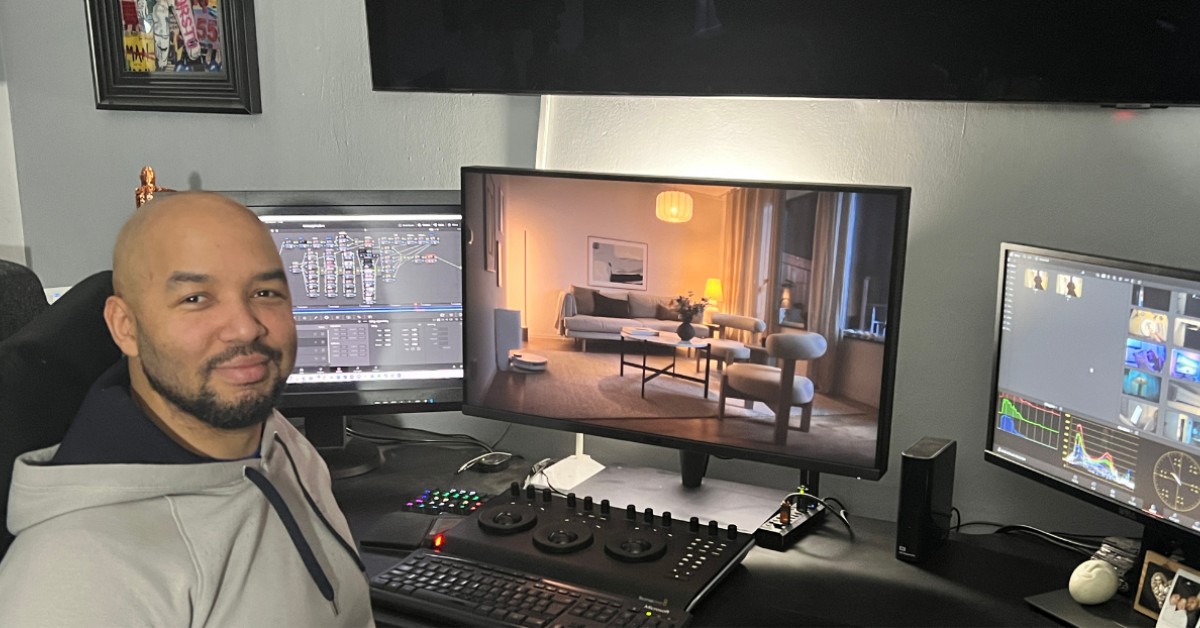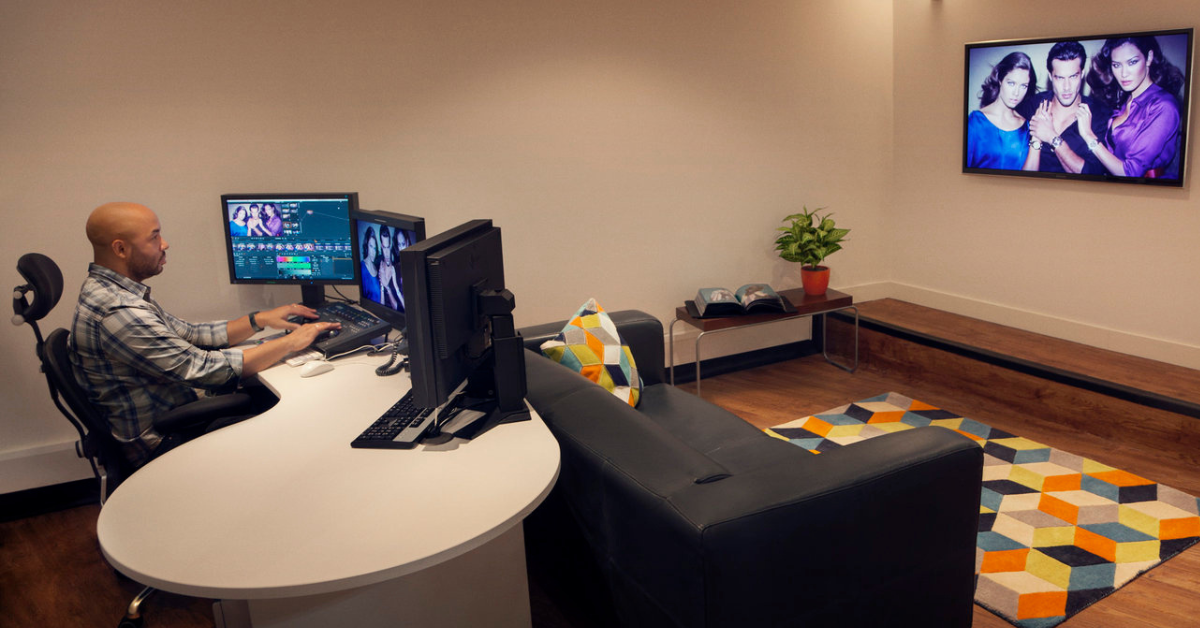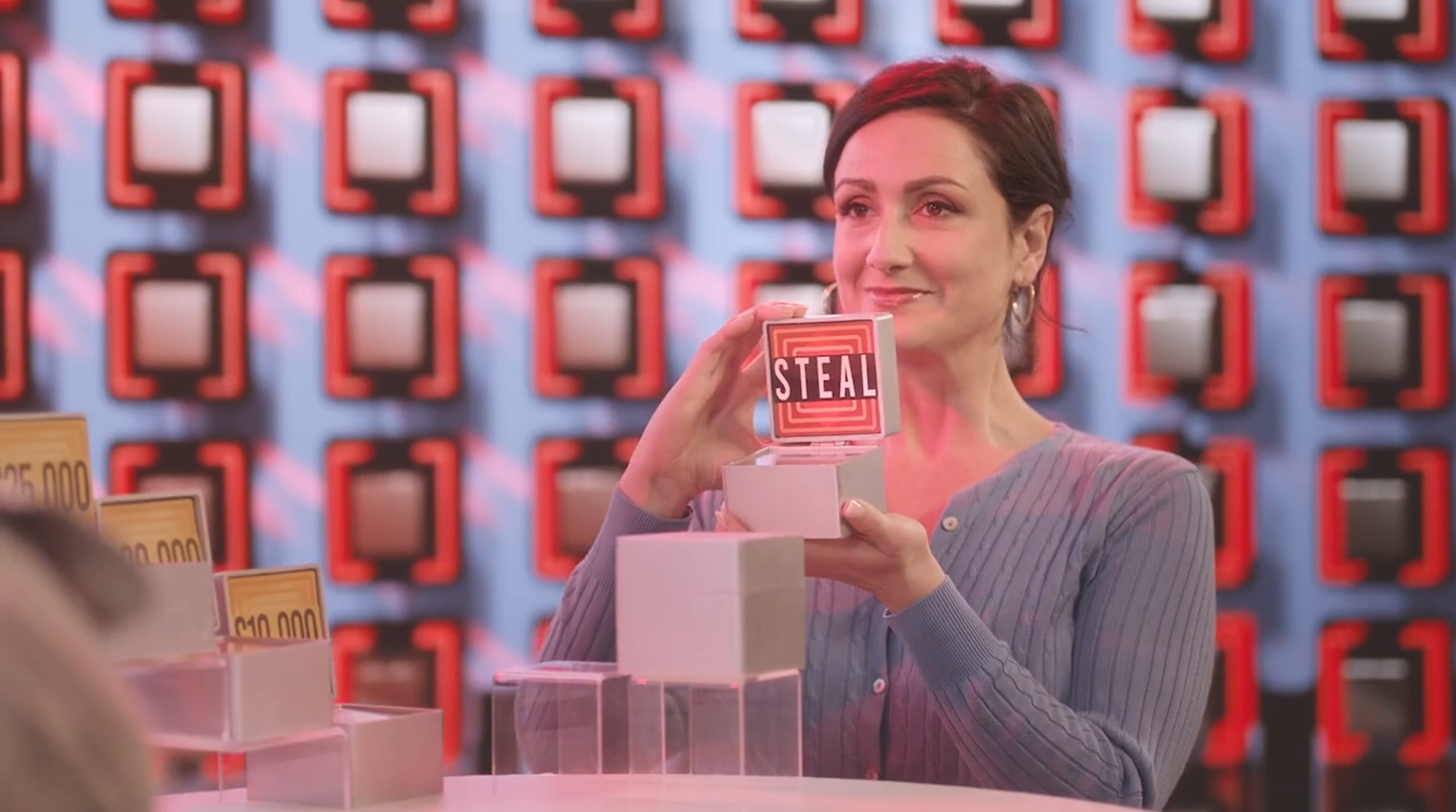
Introducing TCC Talent: Nedeem Alastair Al-Astrabadi
When did you realise that you wanted to be a Colourist? And what drew you to this particular skillset?
In 2005, after completing my MA in Media Production, I secured a runner position at Red Post. I was given a tour of the suites and introduced to the facilities they had on offer. While familiar with visual effects, I knew very little about colour grading, which was considered a dark art due to its high cost. However, I quickly fell in love with the creative process involved in the work and the way you could create a look over the whole project to bring it together.
Were you inspired by anyone in particular to follow this route?
Whilst I loved film, the early 2000s were the golden age of music videos and they had a huge impact on me wanting to work on short-form projects. Videos by Spike Jonze, Chris Cunningham and Michel Gondry were a big influence back then.
What is about Colourist work you enjoy the most?
Creating a unique look and feel for a project still captivates me. There are countless possibilities to explore when designing a film’s aesthetic, and each project feels like a fresh puzzle. The solution only comes to light when everyone is satisfied with the outcome.
How did you learn the skillset of a Colourist? And, do you have your favourite software you like to use?
I learnt on the job. At first, it was bugging Gary Szabo, who was the Colourist at Red Post and Smoke & Mirrors, to show me the ropes after I finished my shift as a Runner. I eventually moved up to an assistant and then Colourist. Now I take training courses every year to keep up with the latest innovations and best practices.
I grade on DaVinci Resolve. It’s a fantastic piece of software that is always getting big updates and is constantly improving and innovating what we can do as Colourists.
What would you say is the most important skill to have as a Colourist?
Definitely communication. As a Colourist, one of the most important aspects of my job is to convey a client’s vision onto the screen. Some clients may have a difficult time expressing what they want in technical terms, instead, they may describe their vision in terms of emotions. My role is to actively listen and communicate with my client and translate those emotions into a visual representation on the screen.
What are you currently working on, or what was your latest project?
Some of my recent projects have been for Ted Baker, Zara, and Samsung.
Where do you envision yourself in the future within the media industry? Do you have professional goals you hope to achieve?
I’d like to branch out into doing more long-form work, such as TV series and film projects. I invested in an HDR grading monitor, so I’m also looking forward to working with more projects that can take advantage of that.
What advice would you give for aspiring Colourists?
I’d consider working at a post-production house as a starting point. This will provide you with exposure to various roles, clients, and companies, allowing you to gain valuable experience. Additionally, there are many excellent training resources available for Colorists today. Begin by taking a course that will provide you with a comprehensive knowledge base of the craft, and then look out for low, or no-budget projects to work on.
Can you talk about a typical ‘Day in the life’ of your role?
Once I have the material and project set up, I’ll normally jump on a call with the client in the morning and go through what they are looking for. After the initial call, I’ll work for a few hours before sending some WIPs over to the client via Frame.io. I’ll continue working while I wait for feedback, or I’ll jump on a call with the client and go through live changes over Zoom. Once everyone is happy, then it’s time to render off and upload.
How do you manage tight deadlines and handle pressure effectively?
One of the benefits of working from home is being able to schedule work around my life. I find it helpful to plan ahead, setting up projects the night before to avoid any complications. I will also prepare by doing some preliminary grading to make the exposures consistent and ready for the more creative work the next day.
2023 was a difficult one for the media industry, how have you navigated through it?
It was a tough time for everyone, and we had to cut back and dip into some savings, but thankfully things started to pick up again in the last few months of the year.

As a Colourist, I’m sure you spend many hours in front of the computer screen. Have you got any good ways to ensure a good work-life balance?
I’ve got 3 kids, so my mornings and evenings can be quite chaotic with meals, school routines, and family activities. However, when it comes to working in my grading suite it’s a calm and relaxing atmosphere. I throw on a podcast or audiobook and focus on work. That said, working in a dark room illuminated only by a computer screen for long hours can make you feel like a cave dweller, so I try to exercise for an hour each day as it’s easy to fall into a trap of barely moving when you work from home.
(…) try to exercise for an hour each day as it’s easy to fall into a trap of barely moving when you work from home.
What was the most challenging project you have worked on? And, what is your favourite type of material to work with?
I graded a series of moving portraits of famous musicians for a photographer that was on display at the Royal Albert Hall. It was very satisfying seeing the work in such a great location, but we had to do a lot of work making sure the portraits ran properly and looked good on the projectors. I love working on fashion projects, I enjoy how creative the art direction can be. I also appreciate anything that’s captured with quality cameras and good lighting.
You’ve been with us a few years now, why did you decide to apply to join our agency? And, what do you feel the benefits are from being with us?
Working with The Crewing Company has been a wonderful experience, both in terms of their reputation and the calibre of clients and projects. Communication with the team is always excellent, and the company provides a supportive work environment. With TCC focused on securing work, I can concentrate on producing high-quality results.
What do you do in your free time?
Spending quality time with my family is my number one priority, followed closely by exercise to keep my mind and body in some kind of shape. Last year, I discovered a new passion for designing clothes and posters, which has become a fulfilling creative outlet for me.
Check out Jason’s showreel here. To find out more about him and other Freelance Talent, please contact a member of the team.



